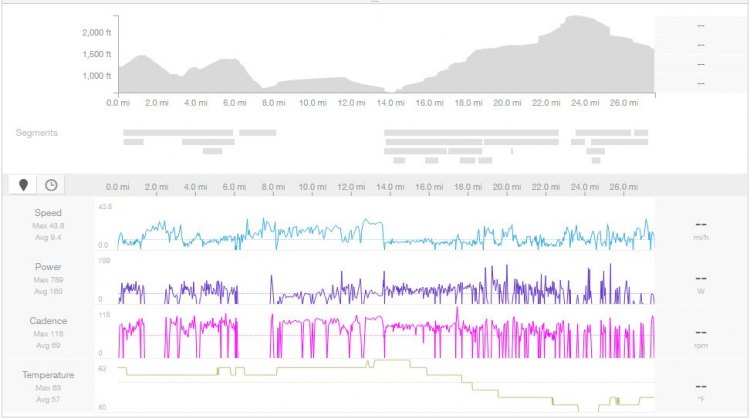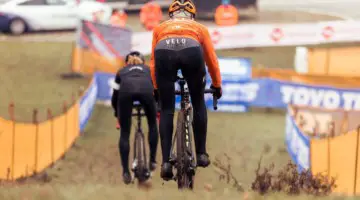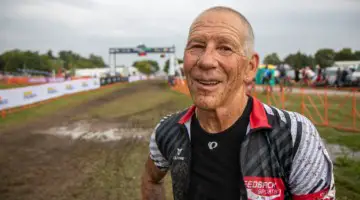Last week, I talked about assessing your 2017 season and setting goals for 2018 using a written approach. Today, I want to follow up with more on how to assess your season that was.
How do you go about actually evaluating your season? There are a few different ways to do it.
Most athletes are striving towards one or more goals and want to evaluate their performance by measuring how close they came to those goals. Often that becomes an unhealthy process for some athletes, so let’s see what we can do about keeping you on the straight and narrow.
Avoiding the “Shoulds”
Some quick, high level, broad brush strokes first. Learn to depersonalize things. Part of why your significant other or close friend is so good at giving you advice is because it’s not their personal problem. It’s easier to see the way when you’re not the one forging it. It’s a life-long process to learn to apply that to yourself but do your best to think about your season as if it were someone else’s.
Part of that includes removing your ego from things. Ego-based decisions are almost always bad. Squirrel Cop is one of my favorite examples of this.
Lastly, remove the “shoulds.” Shoulds are not a lot of fun to impose on yourself. And at the amateur level, cycling should should be about fun; “shoulds” are the opposite of that.
“I should weigh five pounds less” is a statement to think long and hard about. Says who? To what end? Could that goal be accomplished another way? What would you tell your friend or partner if they said that to you about themself?
What Do the Data Say?
On to more concrete things! Data is great! It’s pretty impersonal.
What data do you have to look at? Power data is an easy place to start. You can do a very solid 30,000 foot evaluation of your planning and fitness using power data, particularly the Performance Management Chart from Training Peaks.
You can look at the shape of your Chronic Training Load curve alone and have a pretty good idea of how well the fitness planning aspect of your season went. (There’s an awful lot involved in gathering power data and even more with evaluating it, especially using the PMC. It’s more than I can cover in passing or even one column. You can get started here or contact the cycling coach of your choice.)
Even if you don’t use the PMC, you can look at your season bests for the current year and compare them to previous years. I love it when a client has more than one year of power data because it gives me some idea of what they’re capable of historically and makes for a great road map of where we can go. And for older athletes, it’s often not so much a matter of hitting new values every year so much as hitting the numbers you have in the past. At 42, with 15 years of power data, I can tell you the value of each parameter I would be looking at for a successful ’cross season. For me, those numbers aren’t going to increase at this point. But reaching them each year is still a great goal.
Results are data too. Race results aren’t as granular as power data in that a difference of five spots from year to year is about the limit of precision. Results should be looked at as a general trend. Crossresults.com is also a great way to look at race results. You can look at what might have been different about a given race from year to year (quality of competition, environmental conditions) and see how those factor in. Crossresults also gives a nice summary of what conditions like elevation change, mud and course technicality affect your performance.
Some Softer Data Helps Too
Moving away from hard data, what else is there to look at? As a coach, I highly value the input of people around the athlete. One of the most rewarding feelings I have as a coach is people around the athlete telling me that person is riding faster/stronger/smarter this year. People around you have a good sense of your abilities and how you stack up in an ordinal ranking.

Jonathan Page calls the family. “I wasn’t Superman today,” he said. 2016 U.S. Cyclocross Nationals. © Cyclocross Magazine
When you start exceeding those expectations, people notice. And you should too. Were you beating people you hadn’t before? Doing less well in training compared to others? That’s good, if not particularly specific feedback, on your training.
Did you have any goals at the start of the season? How does what you accomplished compare to those goals? This can often be a hard exercise to be objective about. Buy a teammate a beer or talk it over with someone else you trust. But take a look at what you wanted to accomplish and what you actually did. Don’t treat it as an exercise in good and bad, look at it at what was accomplished and what can be improved and then start mapping how. Get to the why of why you didn’t accomplish everything you set out to, assuming you didn’t.
Finally, Were You Happy?
Subjectively, were you happy this year? While I’ve listed this last, I think it’s most important. It’s a good metric.
Did you enjoy your season and end it before you were unhappy? I think those are the most important benchmarks to hit in your training. If training isn’t fun, you’re not going to do it. Or maybe you will do it, but the bottom falls out in some other way, be that injury or burnout.

Were you happy this season? This may be the important metric for assessing the year you had on the bike. Elite Women, 2017 Zeven UCI Cyclocross World Cup. © J. Curtes / Cyclocross Magazine
Happiness is a great way to know what your training load was like, and overall energy balance is as well. Not every moment of every day is going to be unicorns, but overall were you happy? Did you enjoy yourself this year and avoid serious burnout? Burnout and unhappiness drive a lot of clients my way but it would be nice if we could all minimize it, ultimately?
You’re not going to last more than a couple of years if this isn’t fun and it’s probably not going to be fun for those around you during that time either.
I hope you have learned a thing or two from looking at 2017 and planning for 2018. Assess the season that was, set some goals to have a great next season and take some time away from the bike to pursue a hobby, catch up with friends and enjoy the holidays. The time to prep for next season will be here soon enough.



























